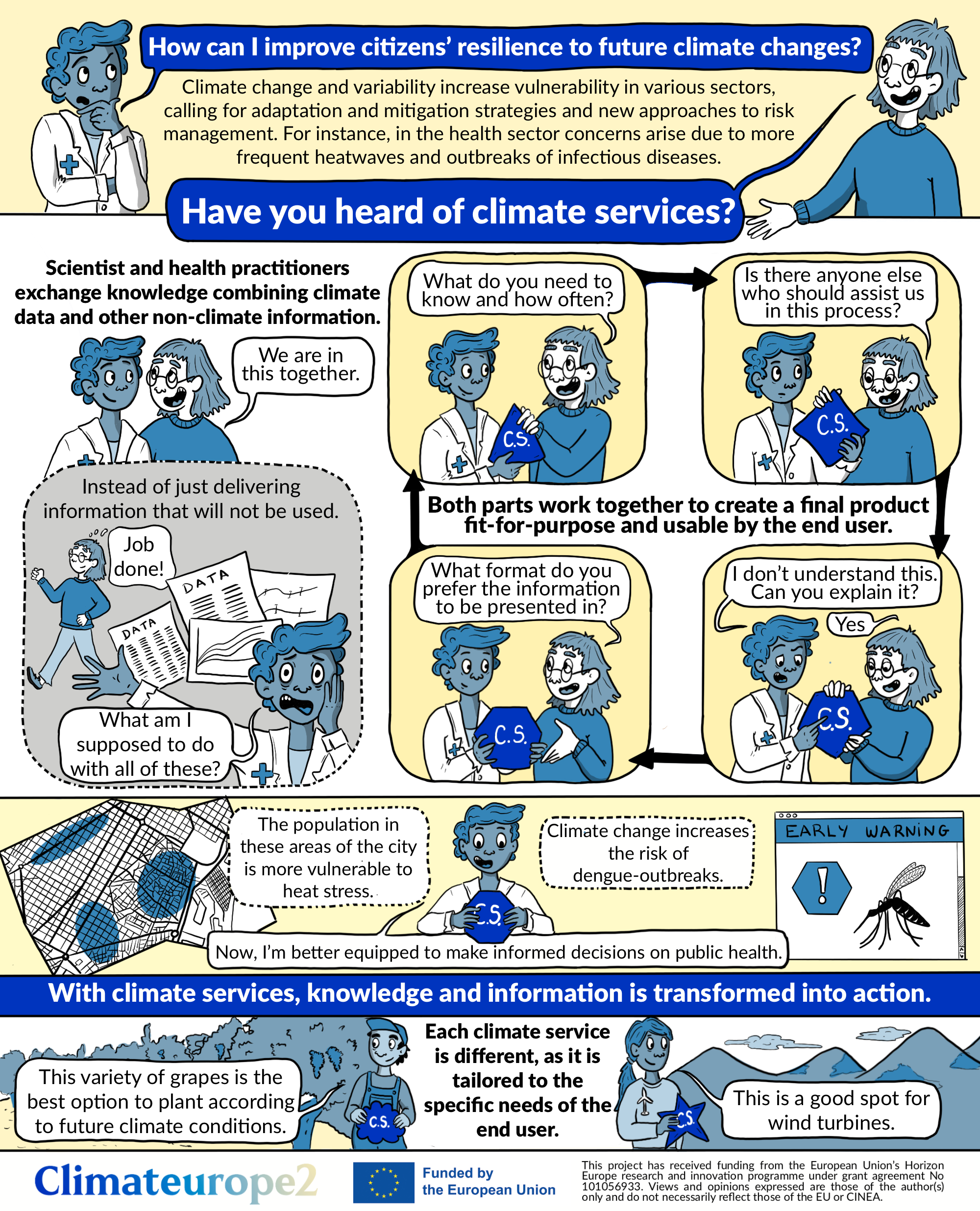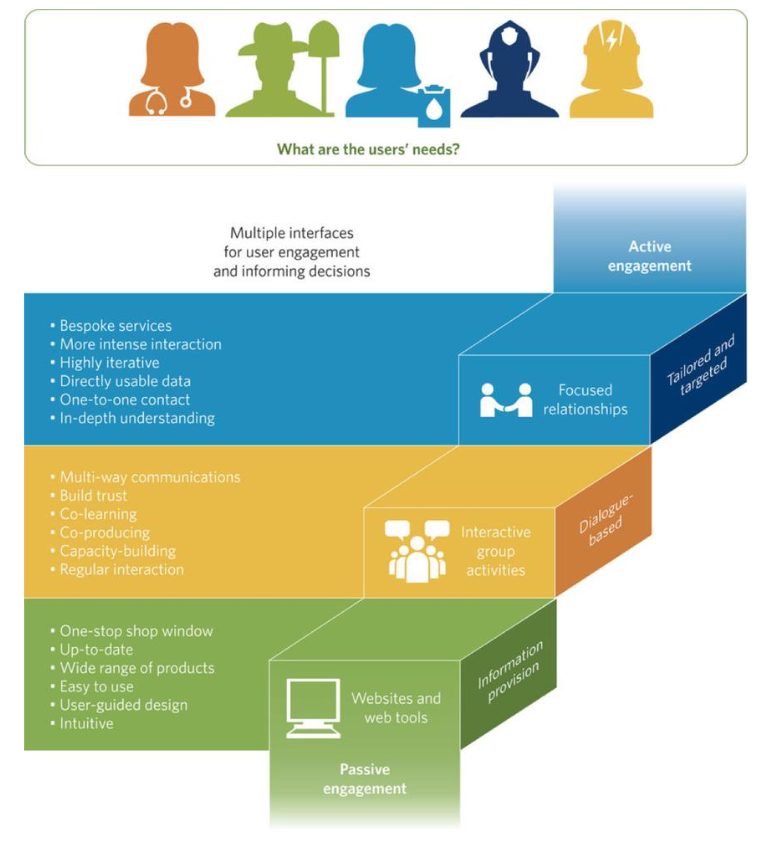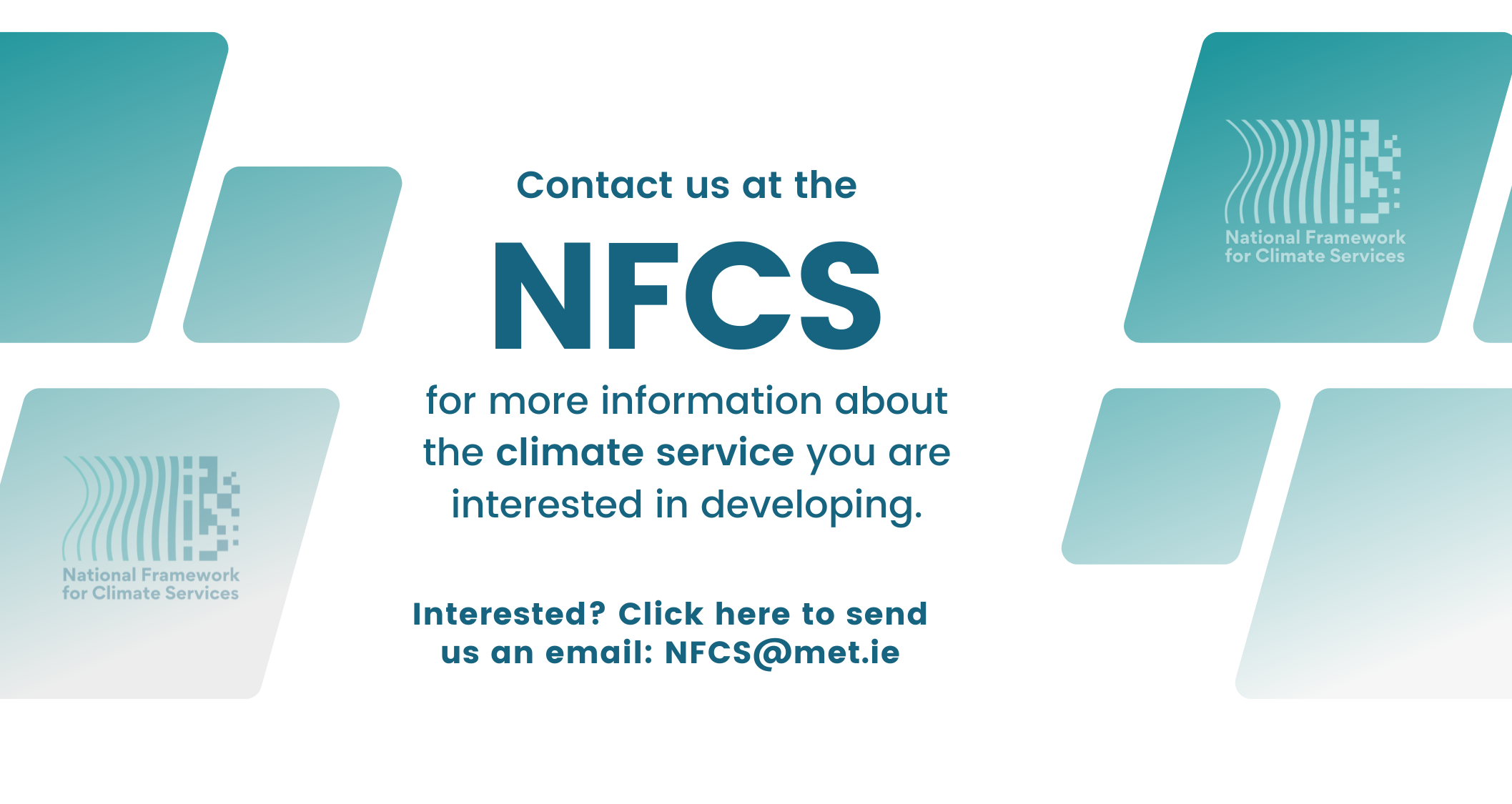What exactly are climate services?
Climate services are the provision and use of climate data, information and knowledge to assist in decision-making. Climate services require engagement between the user and its provider of the information and they can serve to effectively inform climate-smart decision-making. Depending on the needs of the user, data and information can be combined with non-meteorological data (e.g. agricultural production, infrastructure, health information, population or other socio-economic variables) to inform the production of a climate service. Ultimately, the data and information are transformed into a customised product for each different user group or case study.
Examples of climate services are:
– Is our city’s health infrastructure adequate to cope with increasing temperatures and heatwaves in the future?
– Do I need to plant drought-resistant seeds next season based on the potential impacts of forecasted rainfall and temperature?
– How will flooding impact our community in the future and how can we adapt for potential changes?
– Do I need to consider additional water management to ensure my crops are adequately irrigated in the coming years?
The cartoon below from Climateeurope2 (2024) explains what a climate service is, using an example from the health sector:

User engagement
In order for a climate service to be effective, there must be engagement between the users and the providers of the service. This type of engagement can range from passive to highly active (Hewitt et al. 2017), and should be based on the users needs. Three categories of engagement have been identified and are illustrated in the infographic below (1) Websites and web-based tools, (2) Interactive group activities and (3) Focused relationships (Hewitt et al., 2017).

References:
ClimateEurope2 (2024). Climate Services cartoon — Climateurope2 [Website]. Accessed 02/02/2024
Hewitt, C.D., Stone, R.C. and Tait, A.B., 2017. Improving the use of climate information in decision-making. Nature Climate Change, 7(9), pp.614-616.
